Introduction: Rajasthan – The Land of Kings
Rajasthan, often called the Land of Kings, is one of India’s most iconic and culturally vibrant states. Located in the northwestern part of the country, Rajasthan is known for its majestic forts, sprawling deserts, royal palaces, and centuries-old traditions. This state is a living museum of India’s glorious past, where tales of valor, romance, and sacrifice echo through its sand dunes and grand monuments.
From the golden hues of the Thar Desert to the colorful festivals of Jaipur and Jodhpur, Rajasthan is a fascinating blend of ancient legacy and living traditions. It is home to the Rajputana pride, where history breathes through every architectural marvel and folklore lives on through music and dance. For students and explorers, Rajasthan is a treasure trove of knowledge and inspiration.
Brief About the State
Rajasthan is the largest state in India by area, covering approximately 342,239 square kilometers, which is over 10% of the country’s total landmass. Despite its vastness, it ranks among the less densely populated states, largely due to the expansive Thar Desert dominating its western region.
The name Rajasthan translates to “Land of Kings”, reflecting its legacy of Rajput dynasties, royal kingdoms, and a history steeped in valor, chivalry, and architectural grandeur. The state officially came into existence on March 30, 1949, when several princely states merged during the political integration of India.
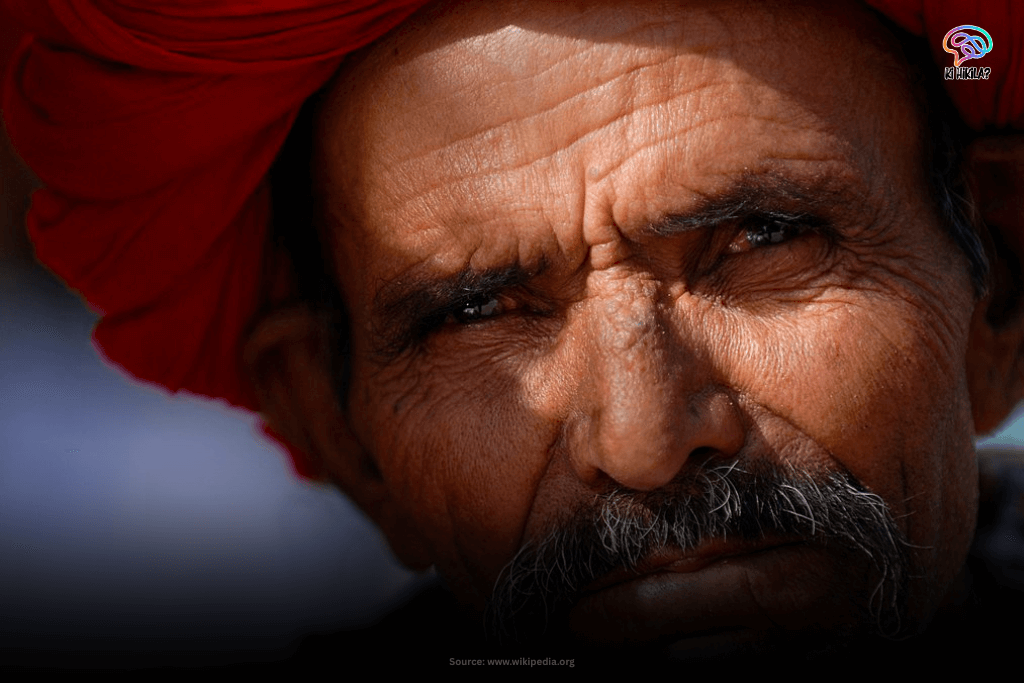
Rajasthan is well known for:
- Rich architectural heritage: Palaces, havelis, temples, stepwells, and imposing forts like those in Jaipur, Jaisalmer, and Chittorgarh.
- Diverse geography: While deserts dominate one half, the Aravalli Hills cut through the state, creating pockets of greenery and biodiversity.
- Colorful culture: Traditional attire, folk dances (like Ghoomar and Kalbeliya), and vibrant fairs like Pushkar Mela.
- Strategic location: It shares borders with Pakistan to the west and five Indian states—Punjab, Haryana, Uttar Pradesh, Madhya Pradesh, and Gujarat.
Rajasthan’s identity is deeply rooted in its past, yet it plays a strong role in shaping modern India’s tourism, heritage conservation, and cultural diplomacy.
Location and Geography
Rajasthan is strategically located in northwestern India, forming a vital part of the Indian subcontinent’s geographic and cultural landscape. It shares:
- International border with Pakistan (over 1,000 km long), making it important from a defense and geopolitical standpoint.
- Domestic borders with:
- Punjab to the north,
- Haryana and Uttar Pradesh to the northeast,
- Madhya Pradesh to the southeast,
- Gujarat to the southwest.
Geographical Highlights:
- Area: ~342,239 sq. km (largest among all Indian states).
- Latitude/Longitude: Between 23.3°N and 30.12°N latitudes and 69.3°E and 78.17°E longitudes.
- Physiographic Regions:
- The Thar Desert (Great Indian Desert): Covers the western part; includes sand dunes, arid plains, and sparse vegetation.
- Aravalli Range: One of the oldest mountain ranges in the world, it stretches diagonally from Mount Abu in the southwest to Delhi, dividing the state into desert and semi-arid zones.
- Eastern Plains: Fertile regions with rivers and agriculture near Kota, Bundi, and Bharatpur.
- South-Eastern Plateau Region: Part of the Malwa Plateau, featuring hilly terrain and forest cover.
Geographical Importance:
- Desert Terrain: Offers insight into arid ecology, camel breeding, and traditional water conservation techniques like baoris (stepwells).
- Biodiversity hotspots: Despite the arid climate, Rajasthan is home to several wildlife sanctuaries and national parks.
This unique mix of desert, hills, and plains makes Rajasthan both geographically diverse and ecologically significant.
Historical Importance
Rajasthan’s history is a grand tapestry woven with stories of bravery, honor, conquest, and resistance. It has been the epicenter of Rajput valor, a land where forts stood tall against invasions, and where royal families ruled vast kingdoms with grace and power.
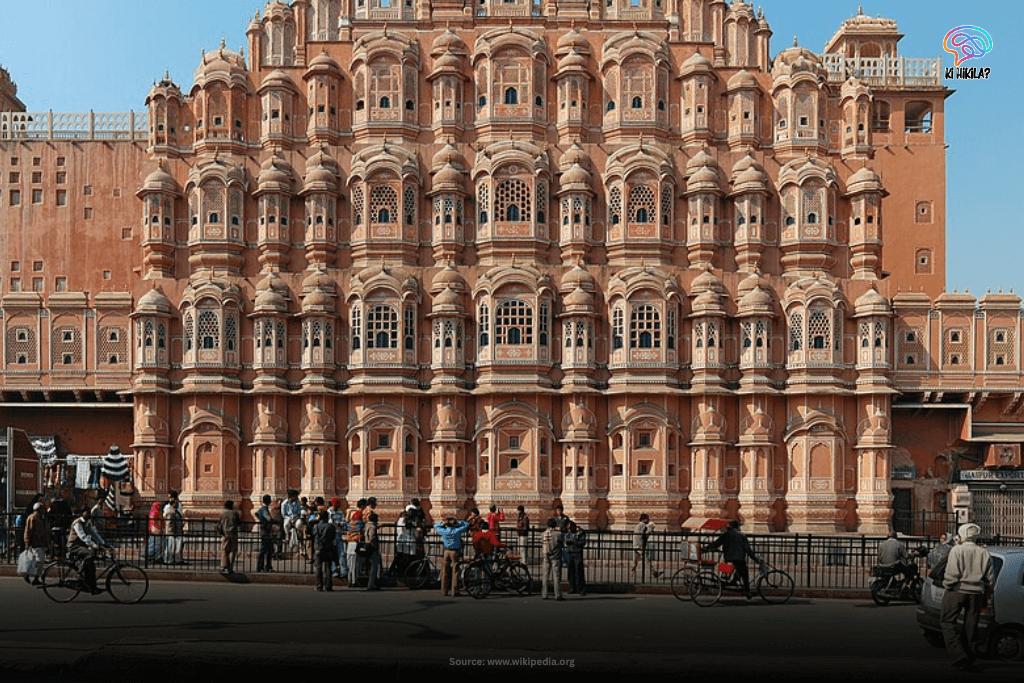
Ancient to Medieval Period:
- Prehistoric Civilization:
- Traces of the Indus Valley Civilization have been found in sites like Kalibangan in the Hanumangarh district.
- Early settlements along the Ghaggar-Hakra River show advanced urban planning.
- Rajput Rule (7th–13th Century):
- Powerful Rajput clans like the Sisodias (Mewar), Rathores (Marwar), Chauhans (Ajmer), and Kachwahas (Amber/Jaipur) rose to prominence.
- These dynasties built majestic forts such as:
- Chittorgarh Fort – symbol of Rajput pride and sacrifice.
- Mehrangarh Fort – stronghold of the Rathores in Jodhpur.
- Kumbhalgarh Fort – known for its massive wall, second only to the Great Wall of China.
- Heroic Battles:
- Famous warriors like Maharana Pratap fought bravely against Mughal Emperor Akbar in the Battle of Haldighati.
- Queen Padmini and Rani Karnavati are remembered for their acts of jauhar (self-immolation) to preserve honor.
Mughal Period and Integration:
- While many Rajput rulers fought against the Mughals, some formed strategic alliances—like Raja Man Singh of Amber, who became a trusted general in Akbar’s court.
- The blending of Rajput and Mughal architecture led to iconic structures like the Amber Fort and City Palace.
Colonial Era and Modern Formation:
- Under British rule, Rajasthan was known as the Rajputana Agency, consisting of over 20 princely states.
- After India’s independence, these states were gradually merged, and Rajasthan was formally formed on March 30, 1949.
- The integration of princely states is a significant chapter in India’s political unification.
Rajasthan’s historical significance lies not only in its grand monuments and fierce battles but also in its resilient spirit, which continues to shape its identity today.
Geography & Climate
Rajasthan is a land of stark contrasts and natural diversity, where burning deserts meet ancient hills, and dry plains merge with lush oases. Its geography and climate are shaped by the Aravalli Range, the Thar Desert, and limited rainfall, creating a unique ecological system and way of life.
Topography: Plains, Hills, Rivers, Coastlines
- The Thar Desert (Marusthali Region):
- Covers western Rajasthan (Jaisalmer, Barmer, Bikaner).
- Dominated by sand dunes, rocky outcrops, and sparse vegetation.
- Frequent dust storms and extreme temperatures are common.
- The Aravalli Range:
- One of the world’s oldest mountain systems, runs diagonally from southwest to northeast.
- Acts as a climatic divide, blocking monsoon winds and influencing rainfall patterns.
- Mount Abu (1,722 m) is the highest peak and Rajasthan’s only hill station.
- Eastern Plains and River Basins:
- Fertile lands around Kota, Bundi, and Bharatpur with canal irrigation.
- Part of the Indo-Gangetic plain influence.
- No Coastline:
- Rajasthan is a landlocked state with no coastal region.
Major Rivers, Mountains, and Forests:
- Rivers:
- Most rivers are seasonal and originate from the Aravallis.
- Major rivers:
- Chambal River – only perennial river, a tributary of Yamuna.
- Banas, Luni, Sabarmati, and Ghaggar (disappears into the desert sands).
- Rajasthan heavily relies on rainwater harvesting, tanks, and canals.
- Mountains and Forests:
Climate and Seasonal Patterns:
- Tropical Desert Climate – Extreme and arid.
- Summers (April to June):
- Scorching heat with temperatures reaching 48°C or more, especially in western districts.
- Monsoon (July to September):
- Short and erratic rainfall (~100 to 500 mm annually).
- Eastern Rajasthan receives more rain due to the Aravallis.
- Winters (November to February):
- Pleasant and dry; ideal for tourism.
- Desert nights can be surprisingly cold.
Rajasthan’s geography and climate have deeply influenced its architecture, agriculture, lifestyle, and festivals, making adaptation a hallmark of its enduring culture.
Demographics Structure of Rajasthan
Rajasthan is home to a diverse population that reflects a rich tapestry of languages, religions, castes, and communities. From the royal Rajputs and merchant Marwaris to tribal groups like Bhils and Meenas, the state’s demographic structure reveals centuries of cultural blending and coexistence.
Population (Latest Available Statistics):
- Total Population (Census 2011): ~68.5 million
(Projected 2024 population: approx. 81–83 million) - Population Density: ~200 people per sq. km (among the lowest in India due to desert terrain)
- Urban vs. Rural:
- Urban population: ~24.9%
- Rural population: ~75.1%
- Sex Ratio: 928 females per 1,000 males
- Literacy Rate: 66.1%
- Male: 79.2%
- Female: 52.1%
(Note: Recent efforts are improving literacy among women and tribal groups.)
Major Languages Spoken:
- Hindi – Official language and widely spoken across the state.
- Rajasthani – Umbrella term for regional dialects like:
- Marwari (Jodhpur, Bikaner)
- Mewari (Udaipur)
- Dhundhari (Jaipur)
- Mewati (Alwar, Bharatpur)
- Shekhawati (Sikar, Jhunjhunu)
- Urdu and Sindhi are also spoken by certain communities.
Ethnic Groups and Religions:
- Rajputs: Warrior class known for their historical kingdoms and martial traditions.
- Brahmins, Jats, Meenas, Gujjars, Bhils, and Banjaras – Significant communities with varied occupations.
- Scheduled Tribes (ST):
- Bhils and Meenas form the largest tribal groups.
- Found mostly in southern districts like Dungarpur, Banswara, and Udaipur.
Religious Composition:
- Hinduism: ~88% (dominant faith with rich temple traditions)
- Islam: ~9% (notable presence in Ajmer, Jaipur, Bharatpur)
- Jainism: ~1% (particularly strong in business communities)
- Sikhism and Christianity: Small but visible populations
- Ajmer Sharif Dargah is a major site of Sufi pilgrimage visited by people of all faiths.
Rajasthan’s demographic landscape is a reflection of its royal heritage, tribal roots, and cultural diversity, offering an inclusive social fabric that enriches its identity.
Administrative Setup of Rajasthan
Rajasthan operates under a democratic, federal system of governance with administrative structures designed to manage its vast area, diverse population, and geographic variations. The state’s political landscape is marked by active civic participation, a strong panchayati raj system, and representation at both state and national levels.
Capital City and Major Cities:
- Capital:Jaipur
- Known as the Pink City, it serves as the political, administrative, and cultural hub of Rajasthan.
- Other Major Cities:
- Jodhpur – The Blue City; famous for Mehrangarh Fort and handicrafts.
- Udaipur – The City of Lakes; known for its palaces and scenic beauty.
- Kota – An educational hub and industrial city.
- Ajmer – Known for Ajmer Sharif Dargah and ancient temples.
- Bikaner, Alwar, Bharatpur, Bhilwara, and Sikar – Important urban and commercial centers.
Districts:
- Rajasthan has 50 districts (as of the latest update in 2023, following new administrative changes).
- Each district is administered by a District Collector (IAS) and has its own Zilla Parishad for local governance.
- Recently created districts include Neem Ka Thana, Balotra, Anupgarh, and others—aimed at improving local governance.
Political Significance:
- Legislative Assembly:
- Total Seats: 200 Members of Legislative Assembly (MLAs)
- Key Political Parties: Indian National Congress (INC), Bharatiya Janata Party (BJP), Rashtriya Loktantrik Party (RLP)
- Lok Sabha Representation (Parliament):
- 25 Lok Sabha constituencies representing Rajasthan in India’s lower house of Parliament.
- Rajya Sabha Members:
- Rajasthan has 10 members in the upper house (Rajya Sabha).
- Governor:
- Appointed by the President of India; acts as the ceremonial head of the state.
- Chief Minister:
- Holds the executive powers and is the head of the elected government.
Local Governance:
- Rajasthan is a pioneer in Panchayati Raj Institutions (PRI):
- Gram Panchayat → Panchayat Samiti → Zilla Parishad structure.
- Empowered by constitutional amendments and digital governance programs like e-Mitra.
Rajasthan’s administrative setup reflects a balance between tradition and modernization, ensuring governance reaches even the remotest desert hamlets and tribal hills.
Culture and Traditions
Rajasthan is one of India’s most culturally rich states, where every region tells a different story through its art, music, dance, dress, language, and festivals. The vibrant traditions of Rajasthan are not just preserved—they are celebrated every day in daily life, folk performances, and colorful festivals.
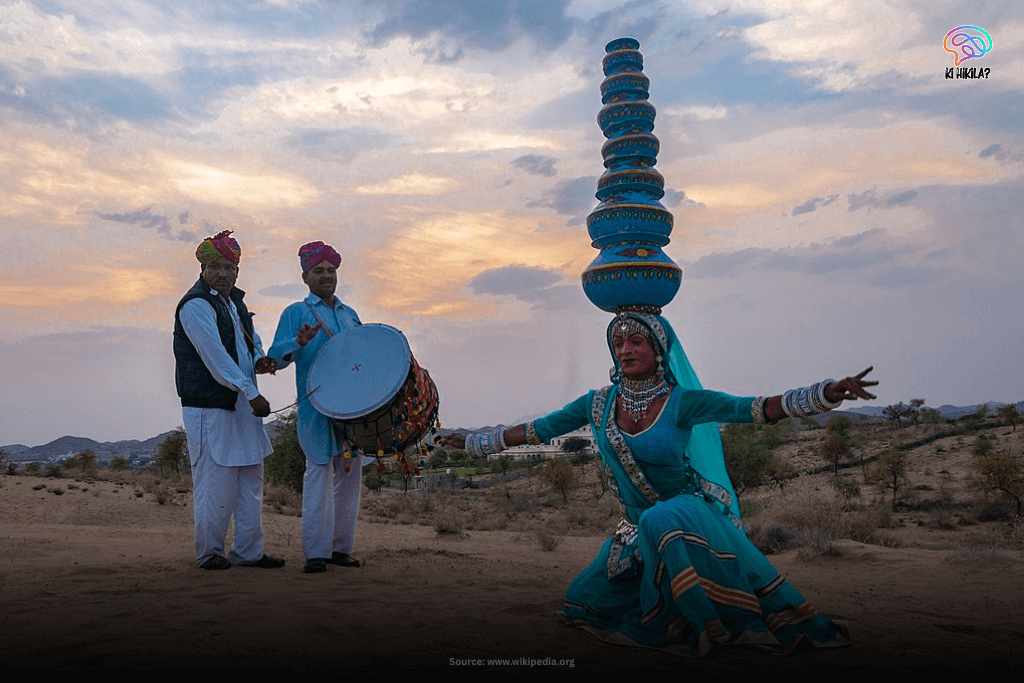
Traditional Clothing:
- Men:
- Pagri (turban): Varies in style and color from region to region (e.g., Bandhej, leheriya).
- Angrakha and Dhoti/Kurta: Traditional attire for daily and festive wear.
- Kamarbandh and Mojaris (leather footwear) are also common.
- Women:
- Ghagra (long skirt), Choli (blouse), and Odhni (veil): Often heavily embroidered or printed.
- Leheriya and Bandhani: Traditional tie-dye textile techniques popular in sarees and odhnis.
- Heavy silver jewelry, bangles, and nose rings are culturally significant, especially in rural and tribal communities.
Music, Dance, and Art Forms:
- Folk Music:
- Instruments like Sarangi, Morchang, Kamayacha, and Dholak accompany traditional songs.
- Famous communities: Manganiyars and Langas are known for soulful desert music.
- Folk Dances:
- Ghoomar: Performed by women in swirling ghagras, especially in Udaipur and Jaipur.
- Kalbeliya: Snake-like movements by the Kalbeliya tribe; recognized by UNESCO.
- Bhavai: Balancing multiple pots while dancing on swords or glass.
- Chari Dance: Women dance balancing pots with burning lamps.
- Art Forms:
- Miniature Paintings: Especially in Jaipur, Bikaner, and Kishangarh.
- Phad and Pichwai Paintings: Used to narrate epics and devotional stories.
- Block printing, mirror work, and blue pottery are key traditional crafts.
Folk Stories and Legends:
- Tales of Maharana Pratap, Padmini, Prithviraj Chauhan, and Rana Sanga are passed down through oral traditions, poems, and puppet shows.
- Rajasthani puppetry (Kathputli) is a popular folk art used to tell heroic and moral tales.
- Legends of love and sacrifice, like the story of Dhola–Maru, form part of the cultural folklore.
Rajasthan’s culture is a symphony of colors, courage, and creativity, deeply rooted in its desert environment, warrior history, and devotional traditions.
Flora and Fauna
Despite its arid and semi-arid environment, Rajasthan supports a surprising diversity of plant and animal life. From dry deciduous forests in the Aravallis to desert-adapted species in the Thar, the state’s flora and fauna reflect its unique ecosystems and conservation efforts.
Native and Unique Plant Species:
- Khejri Tree (Prosopis cineraria):
- Known as the lifeline of the desert, it’s sacred in many communities and vital for soil conservation and fodder.
- Babool, Ber, Neem, Peepal, and Rohida (Desert Teak):
- Common in arid zones; used for timber, medicinal purposes, and agroforestry.
- Cactus species, Agave, and Thorny Shrubs:
- Well-adapted to desert climates and help in sand-dune stabilization.
Endangered or Iconic Animal Species:
- Indian Tiger:
- Found in protected areas like Ranthambore and Sariska Tiger Reserves.
- Leopards, Sloth Bears, Indian Foxes, Striped Hyenas, and Caracals roam the forests and grasslands.
- Great Indian Bustard:
- Critically endangered and found in the Desert National Park (Jaisalmer). It is Rajasthan’s state bird.
- Blackbuck (State Animal):
- Found in open scrublands and protected areas.
- Camel (Ship of the Desert):
- Symbol of Rajasthan’s desert lifestyle, used for transport and trade.
- Chinkara (Indian Gazelle):
- Often spotted in dry regions and grasslands.
Important National Parks, Sanctuaries, and Biosphere Reserves:
- Ranthambore National Park (Sawai Madhopur):
- One of India’s best places to spot wild tigers in their natural habitat.
- Sariska Tiger Reserve (Alwar):
- Known for tiger reintroduction and rich biodiversity in the Aravalli hills.
- Desert National Park (Jaisalmer):
- A vast landscape of dunes, fossil beds, and unique desert species.
- Keoladeo National Park (Bharatpur):
- A UNESCO World Heritage Site and haven for migratory birds, especially Siberian cranes and painted storks.
- Mount Abu Wildlife Sanctuary:
- Located in the Aravallis, known for leopards and lush biodiversity.
- Kumbhalgarh Wildlife Sanctuary:
- Surrounds the historic Kumbhalgarh Fort and shelters wolves, leopards, and antelope species.
Rajasthan’s wildlife heritage stands as a testament to nature’s resilience in even the harshest climates—and reflects the deep cultural respect for nature that exists within its communities.
Economy
Rajasthan’s economy is a dynamic blend of agriculture, industry, mining, tourism, and traditional crafts. While its vast deserts pose challenges, the state has capitalized on its natural resources, skilled artisans, and cultural tourism to build a steadily growing and diverse economic structure.
Main Industries:
- Agriculture:
- Despite the arid climate, agriculture remains a major livelihood.
- Supported by canal irrigation (Indira Gandhi Canal) and modern drip systems.
- Rajasthan is India’s largest producer of mustard, bajra (pearl millet), and guar gum.
- Mining:
- A leading contributor to India’s mining sector.
- Produces limestone, gypsum, feldspar, marble, sandstone, zinc, copper, and silver.
- Home to India’s only zinc and lead smelting plant (Hindustan Zinc, Udaipur).
- Handicrafts and Textiles:
- Famous for block printing, blue pottery, leather goods, jewelry, tie-dye, and mirror work.
- Exports traditional crafts to international markets.
- Tourism:
- Major driver of the service economy.
- Attracts both domestic and international tourists to forts, palaces, wildlife parks, and cultural festivals.
- Cement, Marble & Granite Processing:
- Rajasthan is one of India’s top producers of cement and marble, particularly Makrana marble, used in the Taj Mahal.
- Energy Sector:
- Investments in solar and wind energy due to abundant sunshine and open land.
Agricultural Produce and Cash Crops:
- Main Crops: Bajra, wheat, barley, maize, mustard, pulses
- Cash Crops: Cotton, guar gum, spices (especially coriander and cumin)
- Horticulture: Includes citrus fruits, pomegranates, and dates in some districts
Contribution to India’s GDP:
- Rajasthan contributes about 5% to India’s GDP.
- Sector-wise contributions:
- Agriculture & Allied: ~25%
- Industry (Mining, Manufacturing): ~30%
- Services (Tourism, Trade, Finance): ~45%
Despite water scarcity and harsh climates, Rajasthan’s economy thrives on innovation, resilience, and cultural entrepreneurship, making it one of the more self-sustained and resource-rich states in India.
Tourism
Rajasthan is one of India’s most iconic travel destinations, known for its royal heritage, desert landscapes, vibrant festivals, and magnificent forts and palaces. Whether you’re a history lover, nature enthusiast, or spiritual seeker, Rajasthan offers a deeply immersive experience shaped by centuries of tradition and royal grandeur.
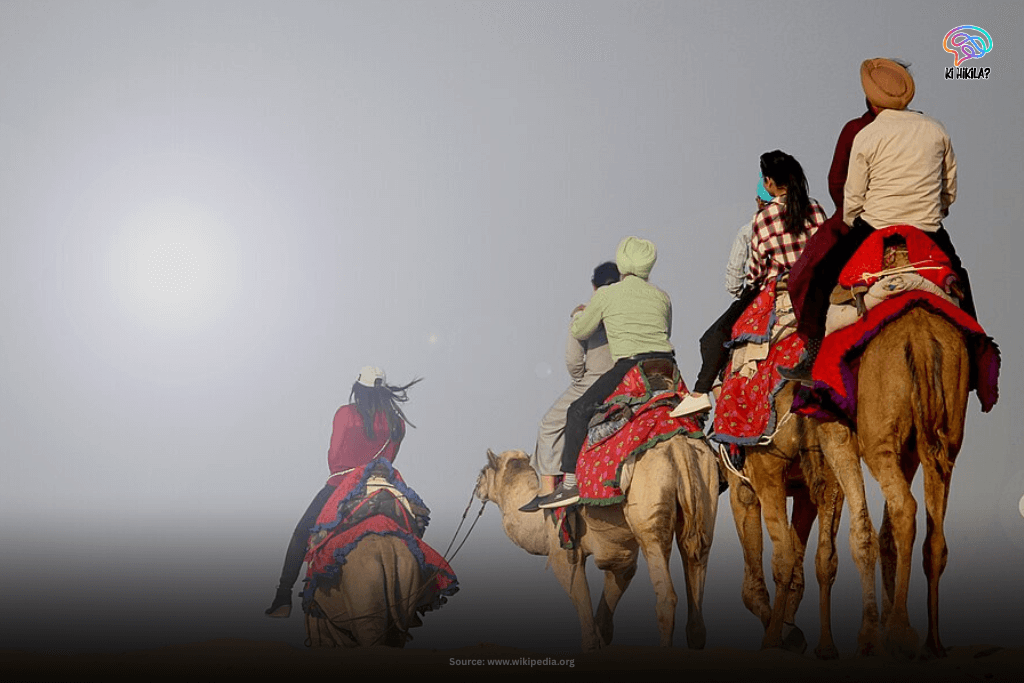
Top Attractions
- Jaipur (Pink City):
- Amber Fort, Hawa Mahal, City Palace, and Jantar Mantar (UNESCO site)
- Jodhpur (Blue City):
- Mehrangarh Fort, Umaid Bhawan Palace, Mandore Gardens
- Udaipur (City of Lakes):
- Lake Pichola, City Palace, Sajjangarh Fort, Jag Mandir
- Jaisalmer (Golden City):
- Jaisalmer Fort, Patwon Ki Haveli, Sam Sand Dunes (desert safaris)
- Pushkar:
- Pushkar Lake, Brahma Temple, and the famous Pushkar Camel Fair
- Bikaner:
- Junagarh Fort, Karni Mata Rat Temple, Camel Breeding Farm
- Mount Abu:
- Dilwara Jain Temples, Nakki Lake, Sunset Point
UNESCO World Heritage Sites:
- Hill Forts of Rajasthan:
- Chittorgarh, Kumbhalgarh, Amber (Jaipur), Ranthambore (Sawai Madhopur), Gagron (Jhalawar), and Jaisalmer Fort
- Jantar Mantar (Jaipur):
- An 18th-century astronomical observatory
Spiritual and Religious Sites:
- Ajmer Sharif Dargah:
- Sufi shrine of Khwaja Moinuddin Chishti; visited by people of all faiths
- Dilwara Jain Temples (Mount Abu):
- Marble temples known for intricate carvings
- Eklingji Temple, Ranakpur Jain Temple, Karni Mata Temple, and Brahma Temple (Pushkar) are other important pilgrimage sites.
Food Tourism (Local Cuisines and Street Food):
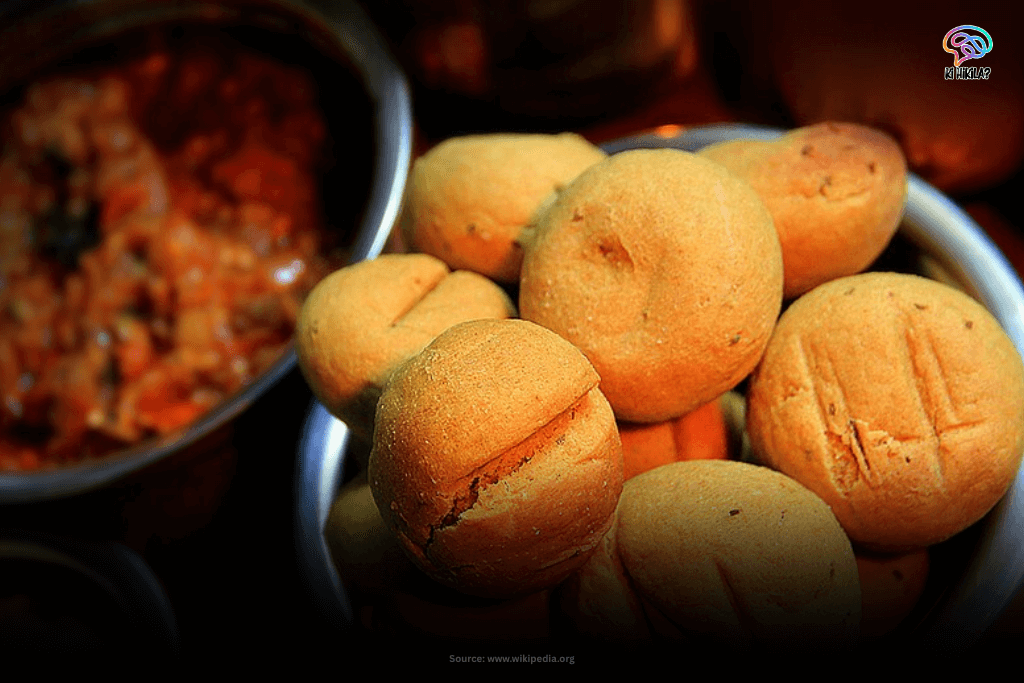
- Dal Baati Churma: Iconic Rajasthani dish of baked wheat balls, lentils, and sweetened cereal mix
- Gatte Ki Sabzi, Ker Sangri, Laal Maas, Safed Maas
- Mawa Kachori (Jodhpur), Ghewar (Jaipur), Rabri (Pushkar), Malpua (Ajmer)
- Street Food Highlights: Pyaaz Kachori, Mirchi Bada, Bajre ki Roti, and Jaljeera
Rajasthan’s tourism reflects the state’s regal history, desert charm, and rich spirituality. Every fort, fair, and folk performance adds a chapter to its timeless story.
Education and Institutions
Rajasthan has made significant progress in education, particularly in higher education, technical institutes, and public policy reforms in rural schooling. The state is home to historic universities, emerging research centers, and a growing ecosystem of coaching hubs and innovation-driven institutes.
Literacy Rate (As per Census 2011):
- Overall Literacy Rate: 66.1%
- Male: 79.2%
- Female: 52.1%
- Recent improvements due to state-led campaigns like Shiksha Setu Yojana, Mid-Day Meal Scheme, and focused efforts in tribal districts.
Major Universities and Colleges:
- University of Rajasthan (Jaipur): One of the oldest public universities in North India.
- Maharana Pratap University of Agriculture and Technology (Udaipur)
- Banasthali Vidyapith (Tonk): A nationally renowned women’s university.
- Birla Institute of Technology and Science (BITS), Pilani: One of India’s premier private engineering institutions.
- Malaviya National Institute of Technology (MNIT), Jaipur: A top-tier engineering and research institute.
- IIM Udaipur: Among the newer Indian Institutes of Management with global academic collaborations.
Specialized and Technical Institutions:
- SMS Medical College (Jaipur) – One of India’s oldest and most reputed government medical colleges.
- IIT Jodhpur: A center for innovation in engineering and artificial intelligence.
- National Law University (NLU), Jodhpur: Consistently ranked among the top law schools in India.
Educational Hubs:
- Kota:
- India’s coaching capital for IIT-JEE, NEET, and other competitive exams.
- Home to leading coaching institutes like Allen, Resonance, and Vibrant Academy.
- Jaipur and Jodhpur:
- Developing as modern centers for IT education, startups, and creative industries.
Rajasthan’s focus on inclusive and higher education continues to grow, with strong foundations in both traditional knowledge systems and modern academic excellence.
Transport and Connectivity
Rajasthan is well-connected through a robust network of roads, railways, and airways, designed to navigate its vast terrain and serve both residents and millions of tourists each year. From desert towns to bustling cities, connectivity has played a key role in the state’s development and tourism boom.
Roads and Highways:
- Rajasthan has over 2.5 lakh kilometers of roads, including:
- National Highways (NH): 15 major highways including NH-8 (Delhi–Mumbai) passing through Udaipur and Jaipur.
- State Highways: Link remote villages to district headquarters.
- Golden Quadrilateral Project: Jaipur is a major junction on this vital national route.
- Expressways:
- Delhi–Mumbai Expressway (underway) will pass through several parts of eastern Rajasthan.
- Desert Roads: Even remote desert regions like Barmer and Jaisalmer are now well connected.
Railways:
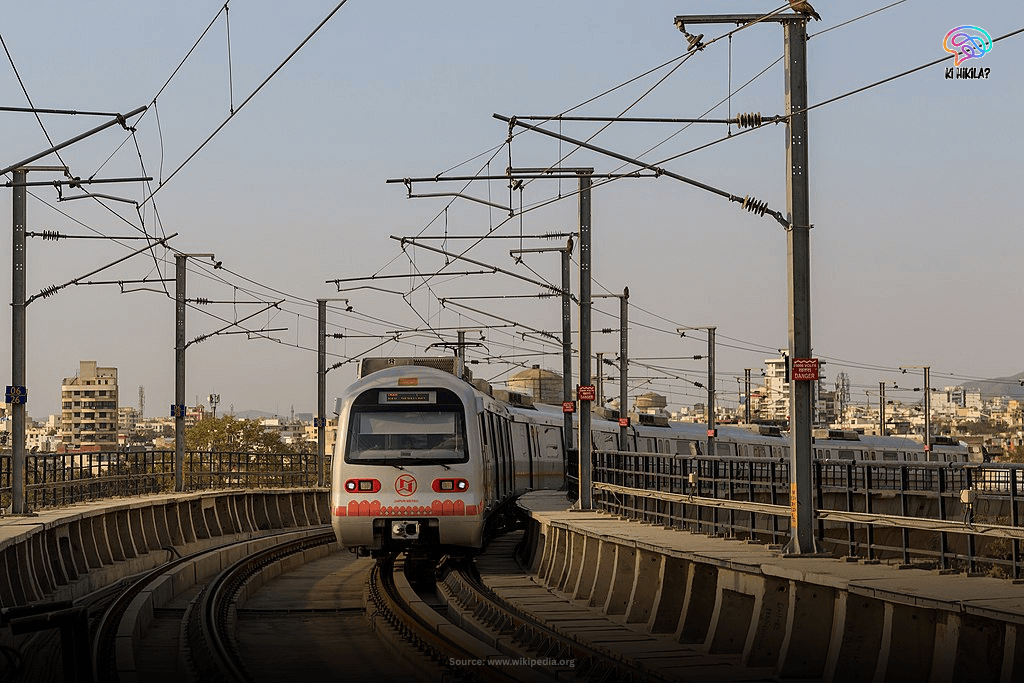
- Rajasthan is part of the North Western Railway zone, headquartered in Jaipur.
- Major railway hubs: Jaipur, Jodhpur, Udaipur, Ajmer, Kota, Bikaner.
- Palace on Wheels: A luxury tourist train showcasing Rajasthan’s regal heritage.
- Important rail connections to Delhi, Mumbai, Kolkata, Ahmedabad, and Chennai.
- Desert regions also served via broad-gauge conversions and heritage train routes.
Airports and Ports:
- Major Airports:
- Jaipur International Airport – Connects to major Indian cities and Gulf countries.
- Udaipur, Jodhpur, and Jaisalmer Airports – Domestic terminals with seasonal and regular flights.
- Kishangarh (Ajmer) Airport – Growing as a pilgrimage and business hub.
- No Seaports:
- Being landlocked, Rajasthan doesn’t have coastal ports.
- However, it relies on Kandla Port (Gujarat) for export-import logistics via road and rail.
Public Transport Systems:
- RSRTC (Rajasthan State Road Transport Corporation):
- Operates regular buses across all districts and neighboring states.
- Jaipur Metro:
- Operational in key corridors; expanding gradually.
- Auto-rickshaws, e-rickshaws, and app-based cabs available in urban centers.
- Camel carts and jeeps still serve as local transport in rural and desert areas.
Rajasthan’s growing transport network ensures smooth accessibility to remote cultural landmarks, rural development, and supports its expanding tourism and trade sectors.
Fun Facts & Trivia
Rajasthan is full of remarkable records, quirky traditions, and legendary figures that add color to its already vivid landscape. Here are some fascinating facts and trivia that make the state truly unforgettable:
“Firsts” and “Biggest” Records:
- Jaipur is India’s first planned city, designed in 1727 by architect Vidyadhar Bhattacharya using Vastu Shastra principles.
- Mehrangarh Fort in Jodhpur is one of the largest forts in India, with walls that rise up to 120 feet.
- Kumbhalgarh Fort has the second-longest continuous wall in the world—over 36 km long!
- Keoladeo National Park (Bharatpur) is Asia’s first man-made bird sanctuary and a UNESCO World Heritage Site.
- Mount Abu is Rajasthan’s only hill station, with cool temperatures and lush forests—a sharp contrast to the surrounding desert.
- Great Indian Bustard, Rajasthan’s state bird, is one of the world’s most critically endangered species.
Unique Cultural Facts:
- Blue City (Jodhpur), Pink City (Jaipur), and Golden City (Jaisalmer)—each city is famously associated with a unique color scheme.
- Camel Festival (Bikaner) and Desert Festival (Jaisalmer) celebrate camel beauty contests, folk music, and traditional crafts.
- Many families in Rajasthan still use royal titles and traditional customs, especially in towns that were former princely states.
- Leheriya and Bandhani tie-dye patterns are so culturally important that they are worn as symbols of status during festivals and weddings.
Celebrities and Historical Personalities from Rajasthan:
- Maharana Pratap: Legendary Rajput warrior king of Mewar.
- Mirabai: Saint-poetess and Krishna devotee from Merta.
- Irrfan Khan (actor), Ila Arun (folk singer), and Manu Bhaker (sport shooter) are notable modern personalities.
- Gulabo Sapera: Renowned Kalbeliya dancer known globally for preserving Rajasthani folk traditions.
These quirky and awe-inspiring facts highlight Rajasthan’s legacy of resilience, royal pride, and cultural richness—making it a land where every grain of sand tells a story.
Conclusion
Rajasthan is more than just a land of deserts and palaces—it’s a state where history lives in the forts, tradition dances in the villages, and resilience shines through every grain of sand. From the mighty Aravalli hills and shimmering lakes of Udaipur to the golden dunes of Jaisalmer and sacred temples of Pushkar, Rajasthan embodies a timeless blend of valor, culture, and color.
Its diverse population, rich art and craft, and vibrant festivals make it a living museum of Indian heritage. For students, it offers endless stories of bravery, innovation, and ecological adaptation. For explorers, it’s a gateway into India’s royal past and spiritual present.
In Rajasthan, every fort has a tale, every folk song has a memory, and every tradition is a celebration. It remains one of India’s most distinctive and soul-stirring states—a place worth studying, exploring, and preserving.
10 Must-Know Facts and Questions About Rajasthan for Students and Learners
What is Rajasthan famous for?
Rajasthan is famous for its royal forts and palaces, desert landscapes, colorful festivals, folk culture, and historic cities like Jaipur, Jodhpur, and Udaipur.
Which is the best time to visit Rajasthan?
The best time to visit Rajasthan is during the winter months (October to March) when the weather is pleasant for sightseeing and desert activities.
What are the top tourist destinations in Rajasthan?
Popular destinations include Jaipur, Jaisalmer, Udaipur, Jodhpur, Pushkar, Mount Abu, Bikaner, and Ranthambore National Park.
What languages are spoken in Rajasthan?
The primary language is Hindi, but regional dialects like Marwari, Mewari, Dhundhari, and Shekhawati are widely spoken.
Is Rajasthan safe for solo travelers and tourists?
Yes, Rajasthan is considered safe for solo and international travelers, especially in major tourist hubs. However, basic precautions are always recommended.
What are the most famous festivals celebrated in Rajasthan?
What food should I try in Rajasthan?
Must-try dishes include Dal Baati Churma, Gatte ki Sabzi, Laal Maas, Ker Sangri, and sweets like Ghewar and Mawa Kachori.
Does Rajasthan have any UNESCO World Heritage Sites?
Yes, it has several, including Jantar Mantar (Jaipur) and Hill Forts of Rajasthan like Kumbhalgarh, Chittorgarh, and Amber Fort.
What are the main industries in Rajasthan’s economy?
Key industries include agriculture, mining, tourism, handicrafts, cement and marble production, and renewable energy.
What wildlife sanctuaries are worth visiting in Rajasthan?
Ranthambore National Park, Sariska Tiger Reserve, Keoladeo Bird Sanctuary (Bharatpur), and Desert National Park (Jaisalmer) are top spots for wildlife enthusiasts.



